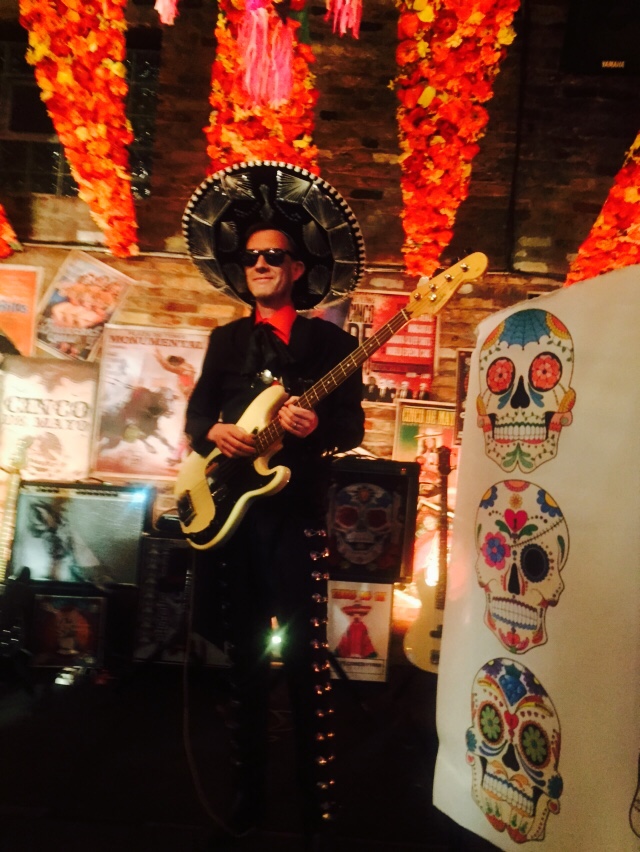There was something off about the style of the leather jackets the two men were wearing. At first I thought they were holdovers from the 1980’s, but that wasn’t quite right. They looked more like a reverse engineering effort where someone had described the 1980s to a designer who hadn’t lived through them, and those jackets were the result.
The two men saddled up to the bar, tossed back their shots of vodka and started work on their beers. I looked at my watch. It was after noon by 15 minutes, but I didn’t get the impression that the midday boundary meant anything to them.
I’ll have a side of cabbage with my cabbage
We were in a small restaurant in Chicago’s Ukrainian Village neighborhood, prepping for an upcoming trip to Ukraine. On Chicago’s near northwest side, two miles from downtown, the area has been a destination for several waves of Ukrainian emigration over the past 150 years. I had assumed that the diaspora had been in Chicago long enough by now to have grown roots and, like every other group of newcomers, cut those roots to move out to the suburbs. For the most part, that is probably true. But it turns out there are still some vestiges of this ancient immigrant stronghold whose owners have not yet fled to Naperville.
As stated in the restaurant’s name and evidenced by the jackets on display at the bar, Old Lviv is a flashback to a different era. There was no sense that a hospitality consultant had ever set foot in the place. There were only six tables and everything was either wood or wood-panelled (it was, to be sure, nice wood – none of us got any splinters).
The restaurant served a buffet with, to my understanding of such things, an extremely authentic Ukrainian selection. Old Lviv is a fine name for the establishment, but Cabbage World would have been accurate too. There were stuffed cabbage rolls, cabbage soup, sauerkraut, and pickled cabbage salad. Perhaps meant to act as palate-cleansers between the cabbage dishes, they also served borscht, blood sausage, and pierogies.
It was obvious that this was the real deal: we were the only gringos in the place. Everyone else was speaking Russian or Ukrainian, or some combination of the two. The restaurant’s TV was broadcasting a news program from Kiev. I had to remind myself periodically that we were still in Chicago.
Walking down the street after lunch I was surprised to see so much store-front advertising printed in Cyrillic. The Ukrainian population in the area might be shrinking, but it is not as far into its death throes as I would have thought. I couldn’t tell if the current events in the country had much influence on this, but Ukraine’s national colors of yellow and blue were on display everywhere. Even Fatso’s, the hot dog joint on the corner, had a Ukrainian flag flying proudly overhead.
Would you like them scrambled or beeswaxed?
Across the street from the Ukrainian Catholic Church, we walked into the Ukrainian National Museum of Chicago. The first floor was taken up with an exhibit of a Ukrainian photographer. But the display consisted only of photos of Chicago. I wanted to explain to the docent that a photograph of Wrigley Field taken by a Ukrainian does not count as a Ukrainian work of art. Sorry, it just doesn’t.
We quickly headed upstairs to the traditional museum displays, where we were greeted by the eggs. Two glass cases held hundreds of wooden Ukrainian Easter eggs decorated with beeswax. Next were the traditionally-dressed mannequins. There were tools and furniture and old photographs. Finally, in the back corner was a re-creation of a traditional Ukrainian farmhouse kitchen. I could just smell the cabbage.
A small weapons room housed several hundreds-of-years old rifles and maces. The explanatory signs only mentioned when they had been in circulation, not who had used them on whom.
I took a pass on the 20th-century room. That period in Ukrainian history is not for the faint-of-heart. It was a beautiful early spring day, the kids were in good moods and behaving well – why ruin it with pogroms, Nazis, and Bolsheviks?
Please exit the time machine to your left
Our next two stops were still Ukrainian, but had been infiltrated by the modern world. We ate dessert at the Shokolad Cafe. There was a Ukrainian staff and they had pierogies on the menu, but unlike Old Lviv there were also hipsters ordering lattes at a polished granite countertop.
Completing our cultural immersion was the Ukrainian Museum of Modern Art. Other than the ubiquitous donation box for the Ukrainian army, there wasn’t the air of the Kievan Rus about the place. There were several pieces on display that were entertaining and fun, but it could have been the French Museum of Modern Art, or the Ugandan Museum of Modern Art, and I wouldn’t have thought anything out of place.
We will be in Ukraine during Easter week – I am already looking forward to buying a decorated wooden egg and guarding it jealously, so that I can tell everyone to mind their own beeswax. And, per the example set by the patrons at the bar in Old Lviv, a country where I can drink with no regard for the clock and dress in fashions that know neither time nor place sounds almost too good to be true. I have great hopes for our journey.
